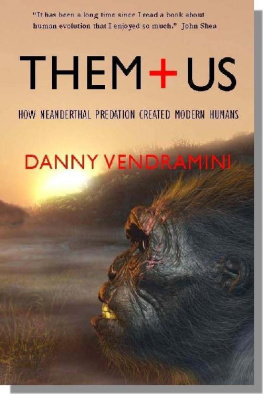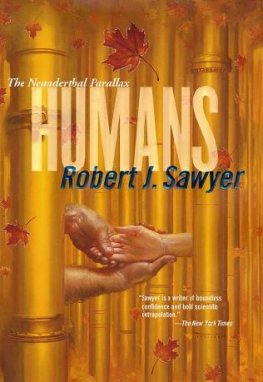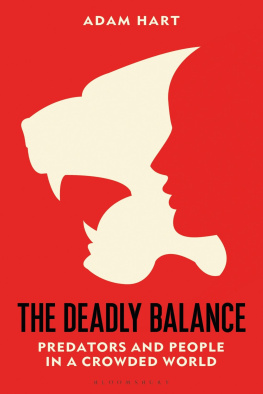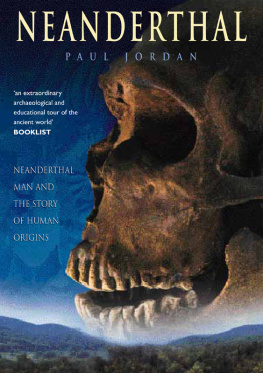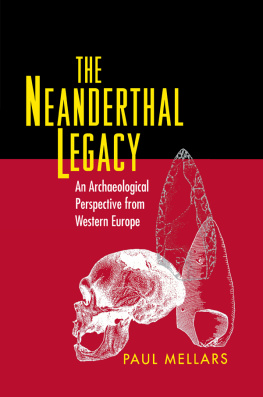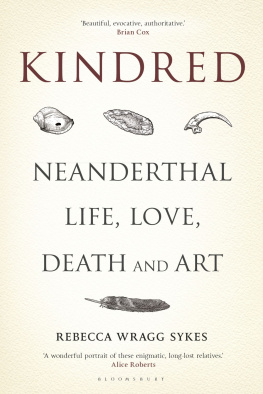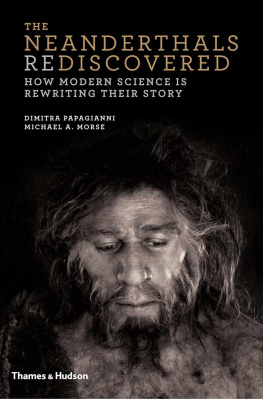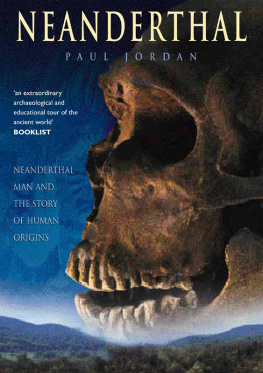
THEM AND US
How Neanderthal predation created modern humans
by
D anny V endramini
Kindle Edition : 2012
Copyright Danny Vendramini 2009
Danny Vendramini asserts his right under the Copyright Act 1968 to be identified as the author of this work.
All rights reserved. Apart from any fair dealings for the purposes of private study, research, criticism or review, as permitted under the Copyright Act 1968, no part of this publication may be reproduced, stored in a retrieval system, or transmitted in any form or by any means: electronic, mechanical, photocopy, recording, or any otherexcept for brief quotations in printed reviews without the prior permission of the publisher.
National Library of Australia Cataloguing-in-Publication entry :
Vendramini, Danny, 1948-
Them and Us: how Neanderthal predation created modern humans
Includes index, bibliography
1. Anthropology Predation (Biology) Human evolution Neanderthals Human beings
First p ublished in Australia by Kardoorair Press PO Box 478, Armidale, NSW 2350, Australia http:// www.kardoorair.com.au
Print edition d esigned and typeset by Helen Forlong , WordWitches , Sydney, Australia http:// www.wordwitches.com
Author photograph: Josie Vendramini
Cover image : Arturo Balseiro , Dharma Estudio
To my father, who said, Be intuitive. And to Rosie, who said, Be rigorous.
ACKNOWLEDGEMENTS
Science is a collaborative pursuit and I am indebted to the authors of the 800 papers and academic sources Ive quoted in this book. Without their bricks, there would be no house. In particular, my thanks to Tord Kjellstrom, Iain Davidson, Johan M G van der Dennen , Coral Wynter, Erik Trinkaus, Svante Pbo, Heather Smith, John Shea, Tony McMichael, Paul Mellars , Susan Antn , David Pearce, Erella Hovers, and Michael Kaplan. Likewise, Im especially indebted to my daughters Josie and Bella, Emily Walker, Bernard Shirley, Keith Johnson, Ned Walker, Andrew Bell, Tom Markham and my publisher Tony Bennett for their invaluable editorial input and advice.
My thanks also to Arturo Balseiro , Creative Director of Dharma Estudio , for his forensic reconstructions of a Neanderthal and to Helen Forlong from WordWitches for her scholarly editing and fabulous book design. Above all, my thanks and appreciation to my wife, muse, mentor and lifelong editor, Rosie Scott.
ILLUSTRATIONS
To reproduce the forensic reconstruction illustrations of the La Ferrassie Neanderthal in Chapter 8 and on the covers, refer to our website for conditions.
Some materials in the book are copyright and are reproduced for research and educational purposes only, under fair use provisions of the Copyright Act 1968. They have been selected at the discretion of the author as they represent principles discussed in the text. No company whose product appears in any advertisement reproduced in this book, nor any company that prepared such an advertisement, is in any way responsible for the opinions expressed in this book.
www. THEMANDUS.ORG
For extra information, colored illustrations and other material, or to buy the printed book, visit the Them and Us website: http://www.themandus.org .
REFERENCES
This book contains 793 scientific references (numbered sequentially) which can be downloaded as a PDF from the books website: www.themandus.org
If you prefer, here is the direct link to the PDF :
http://www.themandus.org/References-them+us.pdf
preface
I ve always loved movies about mythic heroes battling the forces of evil, but in the 1970s, when I heard that George Lucas had based Star Wars on ancient hero myths, my lifelong fascination with mythology really took off.
In 999, inspired by American anthropologist Joseph Campbells work on universal myths, I started researching a book on the relationship between myths and movies. I wanted to explore why widely disparate cultures, often with no contact with one another, somehow came up with virtually identical mythic stories. From ancient Mesopotamia to modern Manhattan, from Amazonian Indians to American matrons, humans appeared so viscerally attracted to the same mythic themesgood and evil, sex and violence, heroes, quests, perilous journeys, dragons and other monstersit was as if they had been hardwired into our genes.
I wanted to include one chapter in the book to explain exactly how these heroic tales came to be so universal that audiences around the world all responded in much the same way. But when I went to the literature I couldnt find a satisfactory biological explanation. Yes, there was Jungs theory of the collective unconsciousbut for my purposes, that appeared too steeped in a quasi-spiritual ethos to provide a scientifically valid explanation.
I eventually realised there was a serious gap in the biological model something missingwhich I found so intriguing that I put the book aside. Instead, I began researching how humans and other animals acquire new instincts, innate behaviours and emotions.
Six years later, the British journal Medical Hypothesis published the results of my research, Noncoding DNA and the Teem theory of inheritance, emotions and innate behaviour. The paper presented a radical new theory of the evolution of behaviour to explain how animals acquired new instincts and emotions. Its central proposition was that high intensity emotional experiences (usually caused by traumatic events like predator attacks, accidents and natural disasters) can, under certain circumstances, be permanently encoded into an area of an animals genome called nonprotein-coding DNA. This is the part that is usually dismissed as junk DNA.
It soon became apparent that Teem theory was a kind of master key that could open other doors, for instance, explaining how humans acquired the repository of innate behaviours and emotions we call human nature. When I applied Teem theory to what had transformed humans from stone-age African hominids into fully modern humans, why we look and act the way we do, and even why were obsessed with sex and violence and good and evil, it proposed a single simple explanation that was both extraordinary and unexpected.
The result is a unified theory of human origins called Neanderthal Predation theory (or NP theory) which is based on a fundamental reassessment of Neanderthal behavioural ecology. Exciting new evidence reveals Neanderthals werent docile omnivores, but savage, cannibalistic carnivorestop flight predators who hunted, killed and cannibalised our archaic ancestors in the Middle East for 50,000 years. Whats more, Neanderthals were also sexual predators, who raided human camps to rape, and abduct young females, leaving a trail of half-cast inbreds .
This multi-faceted predation eventually drove our ancestors to the brink of extinction. Genetic evidence reveals that at one stage our entire ancestral population was reduced to as few as 50 people.
The only humans to survive the predation were those born with mutations for survivalist adaptationsmodern human traits like language capacity, Machiavellian intelligence, coalition building, creativity, risk-taking and aggression. These traits effectively transformed them from a prey species to a virulent new hunter species Homo sapiens .
Armed with these new attributes, the first modern humans systematically exterminated their former predators, firstly in the Middle East and then in a blitzkrieg invasion of Europe. They then spread out to colonise the world. Guided by an innate sense of them and us, hyper-aggressive men killed anyone who looked or behaved even remotely like a Neanderthal, including hybrids and other humans. It was this lethal process of artificial selection that gradually unified human physiology and behaviour.

